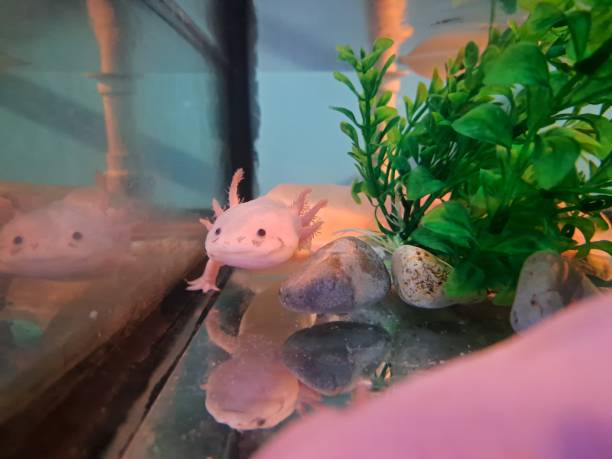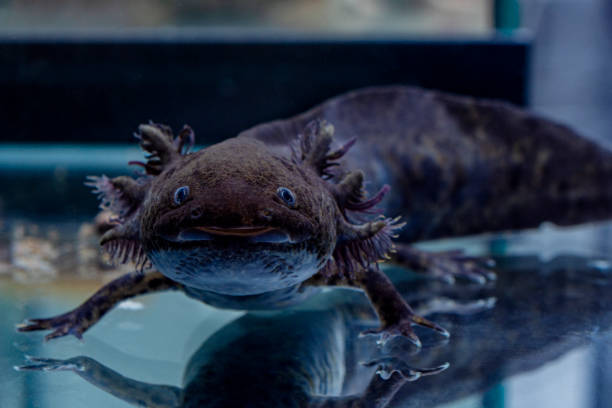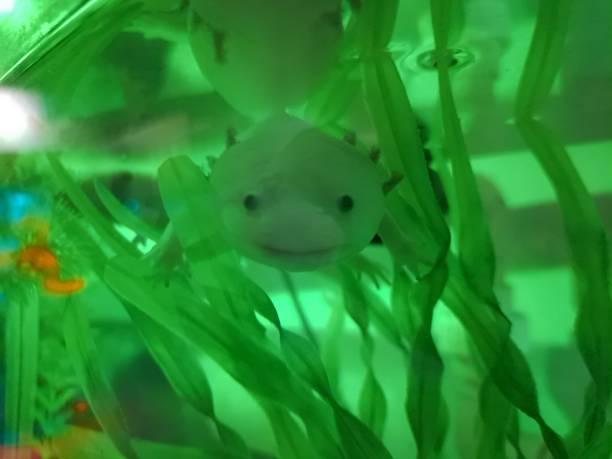
Contents
Do Axolotls Have Ears?
When you first lay eyes on an axolotl, those adorable aquatic creatures often referred to as “Mexican walking fish,” it’s hard not to be captivated by their perpetual smiles and charming appearance. But beyond their cute exterior lies a world of mysteries waiting to be uncovered. One question that tends to pique curiosity is, “Do axolotls have ears?” After all, hearing is a vital sense, and understanding how these enigmatic beings perceive sound is key to comprehending their world. So, let’s dive deep into the aquatic realm and unveil the secrets of axolotl hearing.
Axolotl Anatomy
Before we plunge into the world of axolotl hearing, it’s essential to get acquainted with their fascinating anatomy. Axolotls, while resembling underwater aliens, are amphibians, distant relatives of frogs and toads. Their unique appearance features external gills, limbs resembling delicate fingers, and that perpetual, endearing smile. But what about those ears?
In the human world, we’re accustomed to seeing external ears – those fleshy flaps that help us collect sound waves. However, axolotls don’t possess such iconic ears. Instead, their hearing abilities are more discreetly tucked away, making them less noticeable to the untrained eye.
The World of Amphibian Hearing
To understand how axolotls hear, we need to step into the realm of amphibian hearing. Unlike humans, who rely on external ears to gather sound, amphibians have a different setup. They perceive sound through a combination of their inner ears and specialized structures that transmit vibrations.
Axolotls, being amphibians, have evolved their unique way of hearing. While it might not involve the outwardly visible ears we’re accustomed to, it serves the same crucial purpose – helping them navigate their environment and connect with other axolotls.
Axolotl Hearing Organs
Now, let’s peel back the layers and unveil the inner workings of axolotl hearing. These fascinating creatures have what scientists call “internal ears.” These internal ears are nestled deep within their skulls, hidden from view but playing a vital role in detecting sound.
Imagine a tiny orchestra tucked away behind the scenes. Axolotl ears consist of tiny bones and sensory cells, much like the instruments in an orchestra. When sound waves reach them, these cells spring to life, sending signals to the axolotl’s brain.
Research on Axolotl Ears
Scientific curiosity has driven researchers to investigate axolotl hearing for years, and their discoveries have shed light on this secretive aspect of axolotl biology. Historical studies hinted at the presence of internal ears, but modern research has delved even deeper into understanding these structures.
Recent findings have illuminated the intricate anatomy of axolotl ears. They consist of delicate yet efficient components that respond to sound vibrations. This discovery has unveiled the previously mysterious world of axolotl hearing, allowing us to appreciate the wonders hidden within their skulls.
How Axolotls Detect Sounds
So, you might be wondering, how exactly do axolotls detect sounds in their aquatic world? Well, these creatures are highly sensitive to vibrations. When sound waves travel through the water – whether it’s the movement of prey, potential predators, or other axolotls communicating – they cause vibrations that the axolotl’s internal ears can pick up.
Think of it like feeling the bass at a music concert; axolotls are attuned to the subtle vibrations in their watery environment. But axolotls don’t solely rely on their internal ears. They also use their lateral line system, a series of sensory organs running along their bodies, to detect vibrations in the water. It’s akin to having an extra set of ears, allowing them to have a 360-degree awareness of their surroundings.
Adaptations and Significance
Now that we’ve unveiled the mysteries of axolotl hearing, let’s explore why it matters. Understanding their hearing abilities provides insights into their evolutionary adaptations and survival strategies.
From an evolutionary perspective, axolotls have honed their hearing skills over millennia to thrive in their watery habitats. Their ability to detect vibrations ensures they can sense both danger and opportunities. Picture a stealthy predator approaching – their finely tuned hearing allows them to detect even the faintest movements, helping them evade threats.
In the wild, axolotls use their hearing to hunt for prey, avoid predators, and even communicate with one another. These abilities are vital for their survival and reproductive success. It’s like having a built-in sonar system that guides them through their underwater world.
Common Misconceptions
As with any fascinating creatures, myths and misconceptions often surround axolotls and their ears. One common myth is that axolotls are deaf. However, we now know that this couldn’t be further from the truth; they possess a sophisticated hearing system, albeit one different from ours.
Another misconception is that axolotls have external ears like humans. The absence of external ear structures often leads to this misunderstanding. While axolotls might lack those visible “ear flaps,” their internal ears are more than capable of fulfilling their auditory needs.
Hearing Impairments in Axolotls
Much like humans, axolotls can face hearing impairments. Genetic mutations or environmental factors can affect their hearing abilities. These impairments can have consequences for their survival in the wild, making it more challenging for them to respond to threats or find food. It’s a stark reminder of how delicate the balance of nature can be.
Research and Conservation
Studying axolotl hearing isn’t solely about satisfying scientific curiosity; it has real-world implications for their conservation. Axolotls are critically endangered in the wild, primarily due to habitat loss and pollution. Understanding their sensory abilities, including hearing, can help conservationists better protect these unique creatures.
Conclusion
In the world of axolotls, the presence of ears might not be as obvious as it is in humans, but they do possess a sophisticated internal hearing system that allows them to thrive in their underwater realm. These internal ears, combined with their lateral line system, give them a heightened awareness of their surroundings.
So, the next time you find yourself captivated by an axolotl’s smile, remember that behind that charming exterior lies a remarkable hearing system that allows them to navigate their aquatic world. Axolotls may not have traditional ears, but they certainly know how to listen to the secrets of their underwater realm. It’s a reminder that even in the most mysterious and unexpected places, nature has its own way of creating wonders that continue to captivate and amaze us.








Leave a Reply